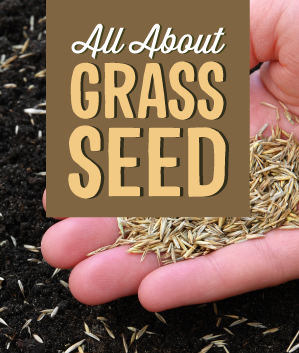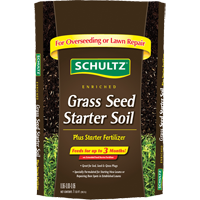
1. Determine the best time to plant grass seed in your area. Primarily, it is best to do so during the Spring or Fall season.
2. Check the soil temperature. The ideal temperature for seeding is 60 or 80 degrees F.
3. Clear the area. First, remove any roots, stems, debris, or thatch by hand. Then, prepare the soil by raking or tilling the top 2-3 inches.
4. Spread 1-inch of a Grass Seed Starter Soil. This should be done so evenly over the entire planting area. Mix thoroughly with the native soil using a rake or tiller. Be sure to use a grass seed starter soil that is specially formulated for starting new lawns or repairing bare spots in established lawns.
5. Apply Grass Seed evenly over the entire area. This should be accomplished using either a rotary or drop spreader. For more information on spreaders, check out our article: Spreaders 101. Cover the seeds with a dressing material at 1/3 inches deep to prevent seeds from moving. (You can use the same grass seed starter soil from the previous tip. Lightly rake and roll the surface area to assure good seed-to-soil contact.)
6. Gently water immediately after planting. Continue to keep the soil well-watered until the grass begins to grow. When grass is 1-2 inches, water every 3 to 5 days or as needed, depending on weather.
7. Keep all traffic off of the new lawn. Continue with normal traffic after the grass becomes well established and is at least 3-inches tall. You may want to block off the newly planted area, especially for households with small children and animals.
8. Replant as necessary. Sometimes, with extreme weather conditions and/or traffic, grass seed can get washed or blown away. Replant using the same steps as needed to ensure successful and even growth.











